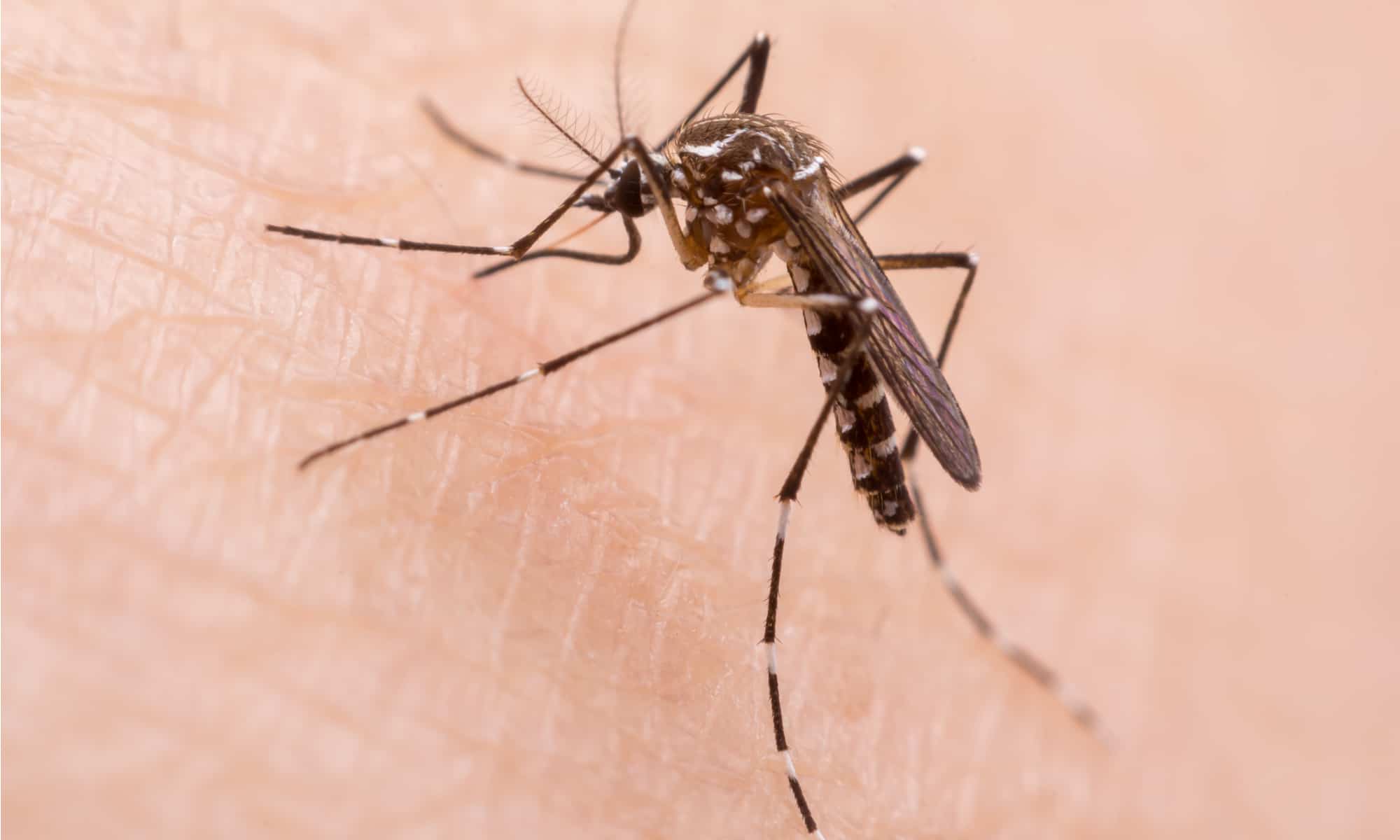North Carolina is located in the Southeastern United States, meaning it has a humid subtropical climate. Therefore, it is home to many wild animals, including insects!
Today we’ll discuss the animals people always try to avoid – either because they cause painful bites or are considered nuisance bugs. You’ll learn where they’re found in North Carolina, what their bites look like, and whether they are dangerous.
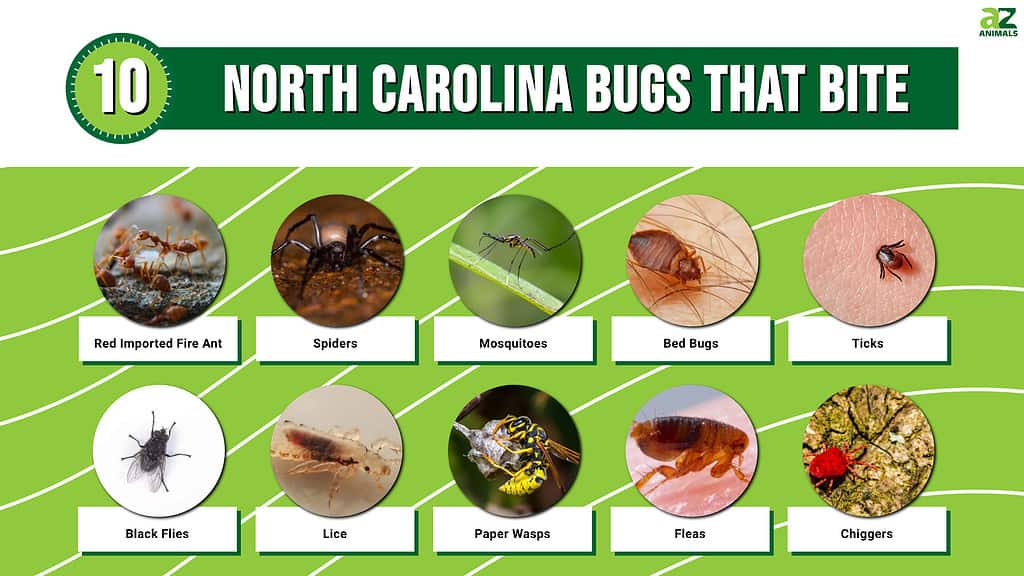
If a wild species bites you, remember that all bites can cause allergic reactions and secondary infections. You must seek medical care if the wound doesn’t heal and additional symptoms appear.
1. Red Imported Fire Ant

Red imported fire ant stings look like swelling red spots that cause pain and itching.
©NOTE OMG/Shutterstock.com
| Scientific name | Location in North Carolina | Stings |
|---|---|---|
| Solenopsis invicta | Found in at least 74 out of 100 counties | Swollen red spots |
While red imported fire ant stings aren’t considered dangerous, people may develop life-threatening allergic reactions. Since the toxins in their venom include four known allergens, allergic reactions are common.
The stings left by these small insects will look like swelling red spots that cause pain and itching. The wound site may develop blisters within the first 12 hours. It’s generally recommended to clean and disinfect the area and apply ice to reduce pain and swelling. However, you should immediately seek medical care if you develop other reactions like dizziness, vomiting, or difficulty breathing.
2. Spiders
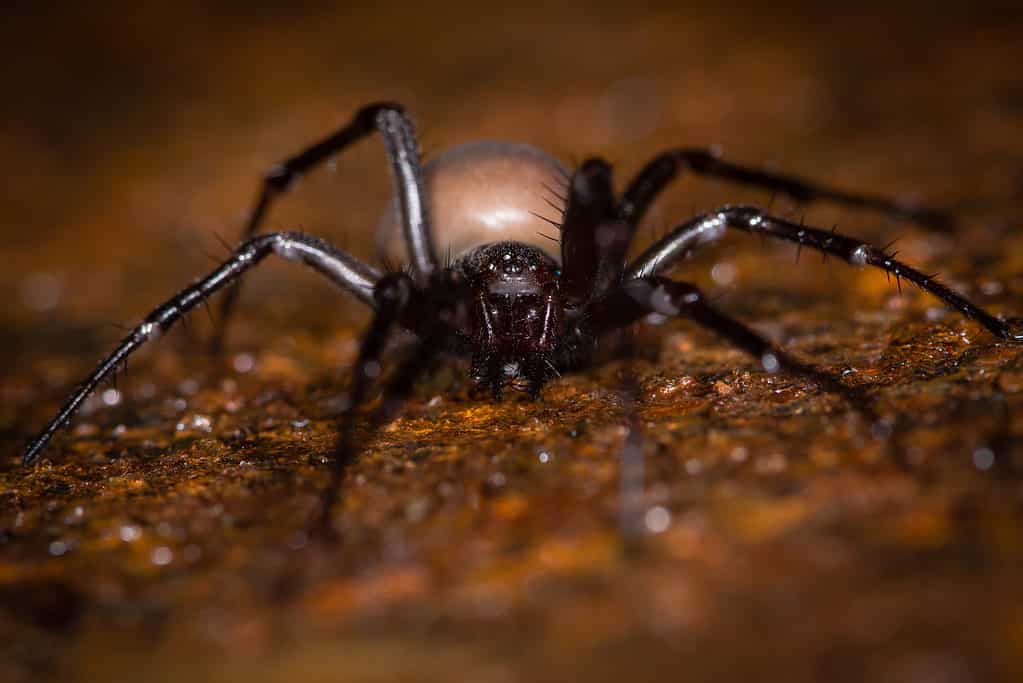
There are over 50,000 spider species distributed worldwide.
©iStock.com/Ian_Redding
| Scientific name | Species found in North Carolina | Bites |
|---|---|---|
| Araneae (order) | The White Sac Spider, the Parson Spider, the Carolina Wolf Spider, the Brown Recluse, and the Black Widow, among others | Most spider bites are harmless, but some can be life-threatening |
There are over 50,000 spider species distributed worldwide! While some spider bites go unnoticed, others are extremely painful and even dangerous.
North Carolina hosts several spider species that can cause serious health issues. Two of them are the black widow and the brown recluse. Black widows live under rocks, wooden boards, and electrical equipment boxes. Their venom affects the nervous system, causing tremors, sweating, and elevated blood pressure.
Brown recluse spider bites cause redness, swelling, and tenderness. The skin may become necrotic and require surgery.
It’s crucial to check with your doctor if a spider has bitten you, especially if you don’t know what species it was or if you develop other symptoms besides normal swelling, pain, and redness.
3. Mosquitoes
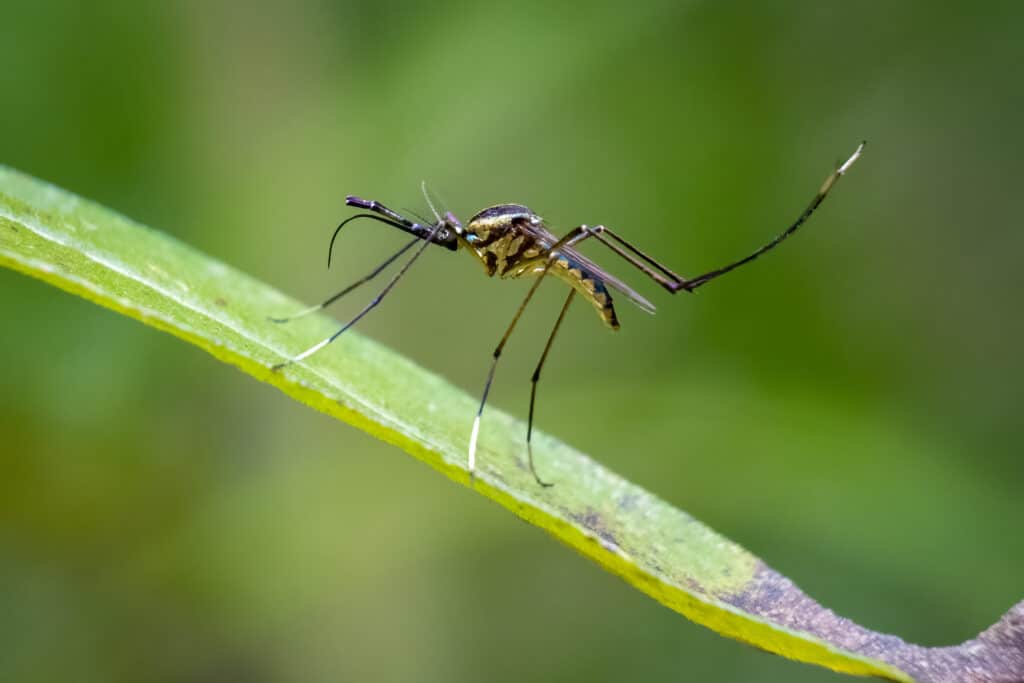
Mosquito bites are known to cause various types of allergies that lead to symptoms like local skin reactions, fever, abdominal pain, or diarrhea.
©samray/Shutterstock.com
| Scientific name | Species found in North Carolina | Bites |
|---|---|---|
| Culicidae (family) | The Northern House Mosquito, the Eastern Saltmarsh Mosquito, and the Asian Tiger Mosquito, among others | Round, hard, swollen, and red bumps |
We all know the infamous mosquitoes! Besides causing itching bites, they can also transmit numerous diseases. They’re vectors of malaria, filariasis, yellow fever, West Nile, Zika, and dengue fever. These insects are responsible for over 700,000 human deaths per year!
Mosquito bites are known to cause various types of allergies that lead to symptoms like local skin reactions, fever, abdominal pain, or diarrhea.
If a mosquito bites you, you’ll notice a round bump on your skin that becomes hard, swollen, and red. You may have multiple bites in the same area.
If the itching lasts too long or you develop other symptoms, you should contact your doctor immediately.
4. Bed Bugs
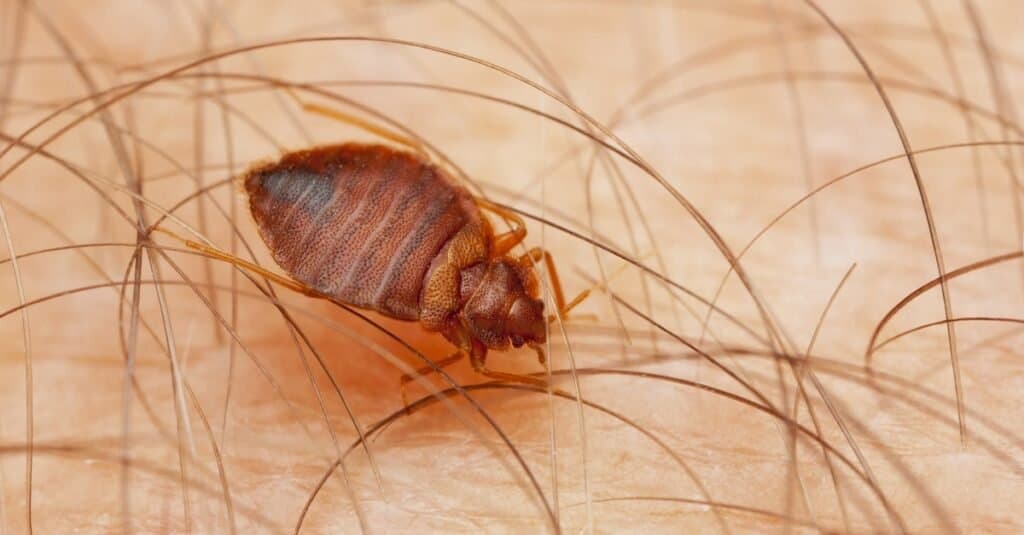
Most bed bugs that bite are in the
Cimex lectulariusand
Cimex hemipterusspecies.
©Pavel Krasensky/Shutterstock.com
| Scientific name | Location in North Carolina | Bites |
|---|---|---|
| Cimex lectularius and Cimex hemipterus | Found throughout the state | Swollen, red, with a dark center; may occur in groups |
Bed bugs feed on human blood. Most bed bugs that bite are in the Cimex lectularius and Cimex hemipterus species. While they primarily live in the tropics, they’ve become common worldwide in recent years and are recognized as major nuisance pests.
In North Carolina, bed bugs are considered a constant problem, especially when the temperatures are between 80 and 90 degrees Fahrenheit. However, bed bugs aren’t considered dangerous. Evidence shows they do not transmit diseases; their bites will only cause swelling and itching.
If you notice bed bug bites, clean them with antiseptic soap and apply topical antihistamines to alleviate the symptoms. Some people may develop allergic reactions, so it’s generally recommended to notice if any other symptoms occur.
5. Ticks
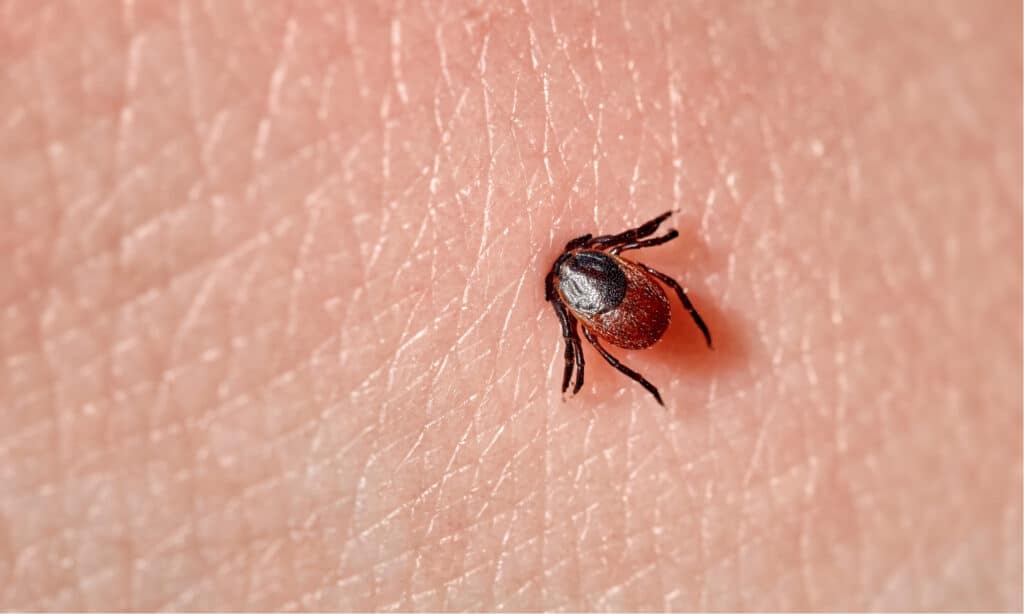
Ticks are 0.1-0.19-inch long parasitic arachnids that primarily feed on mammal and bird blood.
©Evgeniyqw/Shutterstock.com
| Scientific name | Species found in North Carolina | Location in North Carolina | Bites |
|---|---|---|---|
| Ixodoidea (Superfamily) | The Lone Star tick, the Brown Dog tick, the American Dog tick, and the Black-legged tick, among others | Southeast regions, closer to the coast | Blisters, swelling, burning sensation, redness |
Ticks are 0.1-0.19-inch long parasitic arachnids that primarily feed on mammal and bird blood. However, sometimes they feed on amphibian and reptile blood, too. These arachnids are common in warm, humid climates.
Ticks are infamous for their bites, as they can transmit numerous diseases and pathogens. However, it’s generally considered that if the tick is removed within the first 36 hours, there’s no need to worry about disease transmission.
Unfortunately, people often do not notice tick bites, and they become painful only after the tick has sucked enough blood to cause swelling and redness. It’s recommended not to remove the tick by yourself, as you may be unable to remove all its body parts.
The most common disease transmitted by North Carolina ticks is the Spotted Fever Group illness.
6. Black Flies
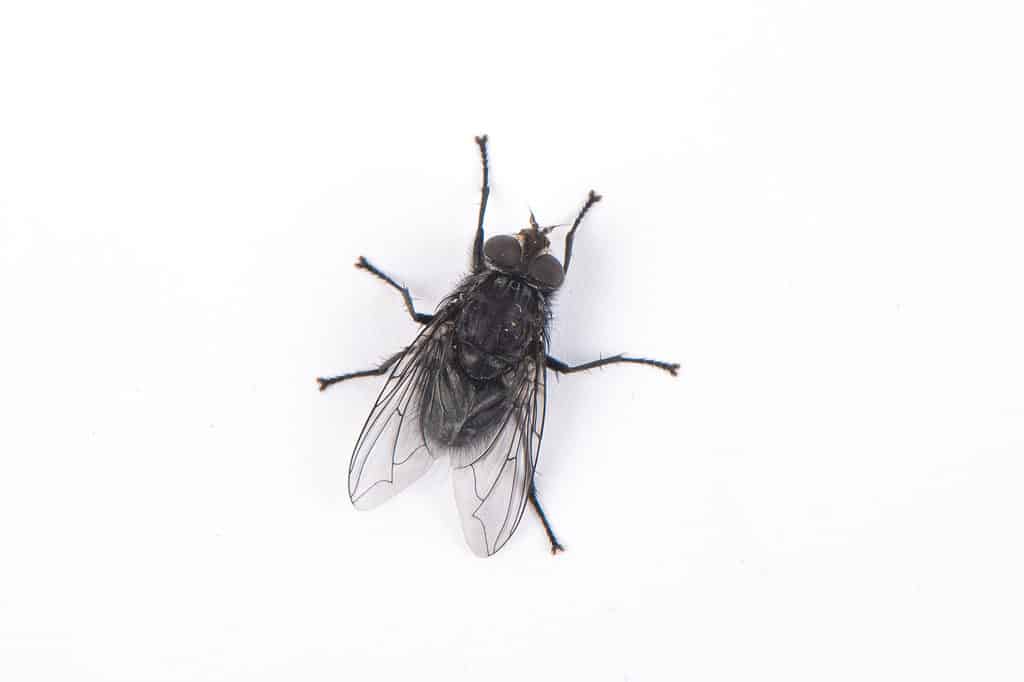
Black flies are infamous for their bites that cause itching, swelling, and inflammation.
©iStock.com/zhikun sun
| Scientific name | Location in North Carolina | Bites |
|---|---|---|
| Simuliidae (family) | Near water sources, particularly where water flows rapidly | Small punctures to large swellings, itching, inflammation |
Black flies feed on mammal blood. These black or gray insects are small, have short legs, and are infamous for their bites that cause itching, swelling, and inflammation. Some bites can cause headaches, nausea, fever, aching joints, and swollen lymph nodes, which are linked to the compounds in their salivary glands. Moreover, black flies can transmit the Onchocerca volvulus parasitic nematode, which can cause river blindness if the infection is severe.
In North Carolina, black flies are found near water sources, especially where water flows rapidly.
7. Lice

Lice bites look like small red bumps.
©iStock.com/DeVil79
| Scientific name | Location in North America | Bites |
|---|---|---|
| Phthiraptera (parvorder) | Found throughout the state | Small red bumps causing severe itching |
Lice are obligate parasites, meaning they need a host to complete their life cycle. Of the 5,000 species in the parvorder, only three types of lice can bite humans – the head louse, the body louse, and the pubic louse.
While the head and pubic louse live on the human body and feed on their hosts’ blood, the body louse inhabits human pieces of clothing and will only visit its host when it needs to feed. Unlike body lice, head and pubic lice aren’t believed to transmit diseases.
Lice bites look like small red bumps. They’re very itchy and will keep appearing until you get proper treatment to kill the lice and their eggs. Moreover, if you’re scratching the bites, you can cause secondary infections.
8. Paper Wasps

Paper wasps are rarely aggressive toward people.
©JorgeOrtiz_1976/Shutterstock.com
| Scientific name | Location in North Carolina | Stings |
|---|---|---|
| Polistinae (subfamily) | Found throughout the state | Pain, burning sensation, swelling, itching, and redness |
Paper wasps are rarely aggressive toward people. They’re reportedly aggressive only during spring hatching. Their stings will cause sharp pain followed by a burning sensation, swelling, itching, and redness.
If you get stung by a paper wasp, remove the stinger and clean the area with water and mild soap. Ice will help with swelling, while hydrocortisone cream will reduce the itching.
9. Fleas
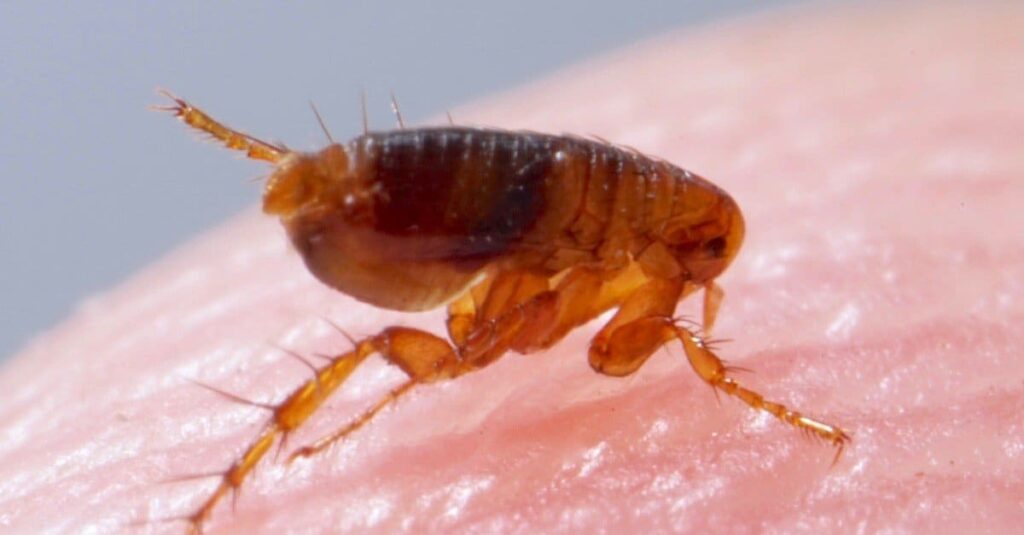
Fleas are small jumping insects that bite humans and animals.
©Sahara Frost/Shutterstock.com
| Scientific name | Location in North Carolina | Bites |
|---|---|---|
| Siphonaptera (order) | Found throughout the state | Small, with a central red spot, often occurring in groups of three or four or in a line |
Fleas are small jumping insects that bite humans and animals. They can cause itchy and painful bites and can sometimes transmit various diseases. However, it’s generally considered that their bites are safe for humans if they aren’t allergic and if the fleas aren’t carrying diseases.
In dogs and cats, however, the bites will be itchy and cause a swollen nodule on the epidermis with a puncture point at the center. These nodules may lead to flea allergy dermatitis, an eczematous itchy skin disease.
These insects can be found everywhere, including Antarctica! The Glaciopsyllus antarticus flea is endemic to Antarctica, where it lives on numerous seabird species.
10. Chiggers
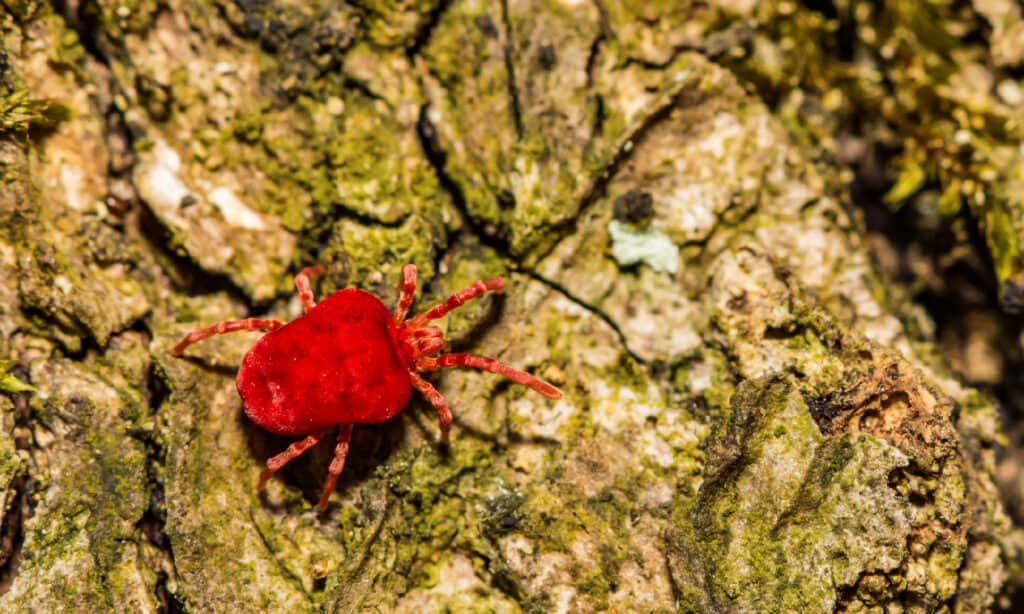
Chiggers are also called red bugs, berry bugs, or scrub-itch mites.
©iStock.com/JasonOndreicka
| Scientific name | Location in North Carolina | Bites |
|---|---|---|
| Trombicula (genus) | Tall weeds, grasses, wooded areas, along hiking trails and river banks | Most often appear in groups and feature pimples, blisters, hives, or welts |
Chiggers are also called red bugs, berry bugs, or scrub-itch mites. They’re small arachnids that attach to animal and human skin and feed on it. Their bites cause itching and trombiculosis, a rash going by the name of chigger bites. They’re pretty common in North Carolina, especially in coastal areas, as chiggers prefer hot and humid areas.
If chiggers bite you, you’ll most likely have multiple bites. They can feature blisters, pimples, hives, or welts. The itching may last for around a week, and the bites should heal within several days. Like any other bug bites, they can cause allergic reactions or secondary infections, so if the symptoms persist or others develop, you should see a doctor.
Summary of 10 North Carolina Insects That Bite
| Insect | Bite | |
|---|---|---|
| 1 | Red Imported Fire Ant | Causes swollen red spots |
| 2 | Spiders | Most spider bites are harmless – but some, like the bite of a brown recluse, can be life threatening |
| 3 | Mosquitoes | Round, red, itchy bumps |
| 4 | Bed Bugs | Swollen, red, with a dark center; may occur in groups |
| 5 | Ticks | Blisters, swelling, burning sensation, redness |
| 6 | Black Flies | Small punctures to large swellings, itching, inflammation |
| 7 | Lice | Small red bumps that cause severe itching |
| 8 | Paper Wasps | Pain, burning sensation, swelling, itching, and redness |
| 9 | Fleas | Small, with a central red spot, often occurring in groups of three or four or in a line |
| 10 | Chiggers | Most often appear in groups and feature pimples, blisters, hives, or welts |
Thank you for reading! Have some feedback for us? Contact the AZ Animals editorial team.

